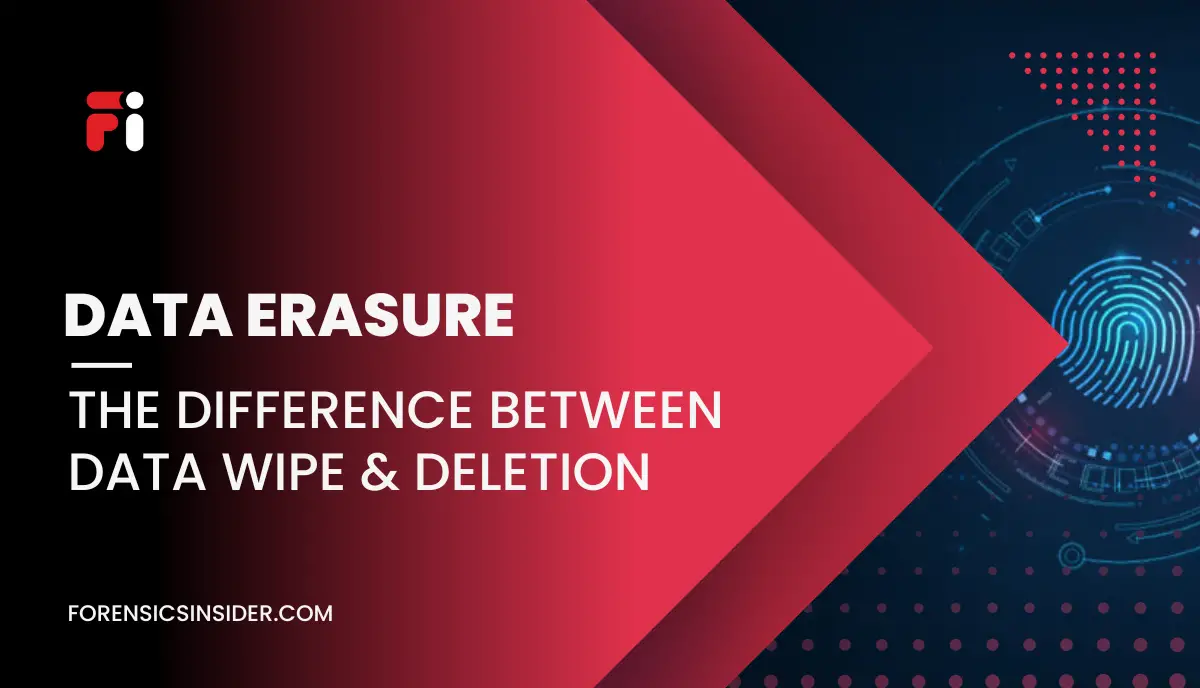In the contemporary digital landscape, data breaches and leaks are frequent occurrences, leading individuals to grapple with the question of how to manage the data stored on their devices. When faced with the decision of what to do with unwanted data, users often find themselves debating between data deletion and data wiping. While these terms may seem interchangeable, they denote distinct processes with different outcomes. Let’s delve into the disparities between data deletion and data wiping.
What is Data Deletion?
When a file is deleted from a computer, it becomes invisible to the user, creating the perception that it has been permanently removed from the system. However, the act of “deleting” merely eradicates the file’s pathway or address, rendering it inaccessible. File systems like NTFS, FAT, or APFS store file locations based on specific protocols, and when a file is deleted, only the file address (pointers) is removed from the system’s address table. Despite the user’s perception of complete removal, the file can be recovered using data recovery tools.
In digital forensics, data deletion involves meticulous preservation of evidence integrity. Investigators create forensic images of storage devices before employing specialized tools to analyze deleted file remnants. This ensures a comprehensive understanding of the digital landscape and adherence to forensic protocols, maintaining evidentiary value.
What is Data Wiping?
In contrast, data wiping, also known as data erasure, involves the comprehensive eradication of data from a storage device. Unlike data deletion, data wiping ensures that no remnants of the data persist on the device. During data wiping, the hard drive’s sectors are overwritten with random, meaningless data, obliterating the previous information. Various data erasure standards, such as DoD 5220.22-M and NIST 800-88, dictate the process depending on compliance requirements. In the event of a compromised storage device, retrieving the wiped data is impossible.
Data wiping in digital forensics is a precise process using tools compliant with standards like DoD 5220.22-M. It ensures the irreversible removal of data, vital for maintaining chain of custody and preventing misinterpretation. Forensic experts carefully document each step, emphasizing credibility in legal investigations.
How to Perform Data Deletion and Data Wiping?
Deleting data is a familiar process for computer users, involving a simple press of the Delete (DEL) button or a right-click and selecting “Delete.” The file then moves to the Recycle Bin or Trash. Alternatively, pressing Shift + DEL bypasses the Recycle Bin, deleting the file permanently.
Wiping data necessitates actively searching for the file location and permanently erasing it. Effective data erasure tools like BitWipe® drive Eraser offer secure data wiping, allowing users to select preferred wiping standards tailored to their business needs.
What to Delete vs. Wipe?
For non-confidential or non-critical files, such as duplicate pictures, old receipts, and junk folders, conventional deletion suffices. Data wiping, on the other hand, is employed by businesses adhering to government compliances to protect sensitive information. This method is crucial for safeguarding business data and ensuring complete protection before disposing of storage devices.
Data erasure is typically used by companies that need to comply with various government regulations and protect confidential business information from compromise. Helps IT professionals reallocate resources to employees by wiping the hard drive. Companies should also delete data before disposing of storage devices to ensure complete data protection. The storage device could contain anything from invoices, invoices, sales reports to marketing strategies.
However, data deletion isn’t just for businesses: people can also delete data from their external hard drives, laptops, etc. if they decide to sell them.
Data Recovery After Deletion and Wiping
Recovering accidentally deleted data involves using do-it-yourself data recovery software. Even files deleted using Shift + DEL can be recovered. Conversely, data wiped from a storage device cannot be recovered by any software or in-lab data recovery services, emphasizing the irreversible nature of the process.
Data Recovery After Deletion:
- Accidental Deletions: If you’ve unintentionally deleted a file, there’s still hope for recovery. Various do-it-yourself data recovery software tools are available. These applications scan your storage device for traces of deleted files, allowing you to restore them. Even files sent to the Recycle Bin or Trash can typically be recovered from these folders before permanent deletion.
- Using Backup Solutions: Regularly backing up your data is an effective preventive measure. If you delete a file, you can retrieve it from your backup. Cloud-based services, external hard drives, or dedicated backup software can help ensure you have a copy of your important files.
- File History and Previous Versions: On Windows, File History and Previous Versions features allow you to recover earlier versions of files. If you’ve enabled these features, you can restore a file to its state before deletion.
Data Recovery After Wiping:
- The Impossibility of Recovery: Data wiping is a more secure method compared to simple deletion. Once data is wiped using industry-standard methods like DoD 5220.22-M or NIST 800-88, the overwritten data is typically irretrievable. Unlike data deletion, where traces remain, data wiping ensures a higher level of security.
- No Room for Error: Due to the rigorous process of overwriting the entire storage space with random data during wiping, the original data is effectively eradicated. Consequently, there is no residual information left to recover, making the chances of retrieval practically nonexistent.
- Ensure Backup Before Wiping: Before opting for data wiping, ensure that you have backed up essential data. Once data is wiped, recovery is not possible. Therefore, having a reliable backup ensures that you can restore critical information if needed.
Conclusion
In the digital age, proper management of data is paramount. Deleting files, while making them inaccessible, leaves remnants on the device. In contrast, data wiping ensures complete erasure, making recovery impossible. Tools like BitWipe® Drive Eraser provide a secure means of data wiping for users looking to safeguard their information beyond the reach of recovery.




